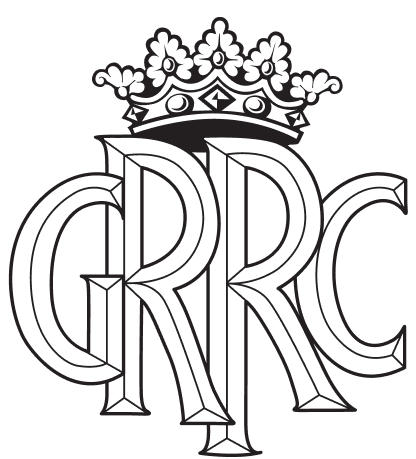Remembering Goodwood Motor Circuit’s wilderness years | Axon’s Automotive Anorak
This year Goodwood has marked its 75th anniversary in unforgettable style, with electrifying and emotional celebrations at the 80th Members’ Meeting presented by Audrain Motorsport, Festival of Speed presented by Mastercard and the Revival. It didn’t take long following the original opening of the celebrated Motor Circuit on 18th September 1948 for Goodwood to find fame in top-level international motor racing. It was a reputation that continued to grow throughout its 18-year stint as an international motorsport venue. On 2nd July 1966, however, Goodwood held its final pre-‘modern era’ race – the 71st Members’ Meeting – before the Circuit was closed (first time around) for various reasons, though primarily due to the introduction of the new, more powerful, 3.0-litre Grand Prix cars.

From 1967 onwards, the Motor Circuit was used extensively for testing, with the much of the development of the legendary Cosworth DFV engine undertaken at Goodwood, as well as being used for extensive testing by a number of leading contemporary Formula One teams and drivers, including Brabham, Lotus, Tyrrell, Lola, Williams and McLaren. Bruce McLaren, the legendary Kiwi driver and eponymous team founder, tragically lost his life at the age of just 32 while testing his M8D Can-Am racer at Goodwood in July 1970, when the car’s rear bodywork came adrift at speed, causing McLaren to lose control and hit a disused marshal’s post.
In 1983 Brabham driver Nelson Picquet set the fabled ‘sub-minute’ lap at Goodwood while testing the BT52. There’s no evidence of the lap time, but it’s a record that remains unbroken to this day. All F1 testing at Goodwood ceased shortly after that phenomenal achievement, with the Circuit then used mainly for lesser club events. I recall attending a small enthusiasts’ auto test at the track with my Alpine-Renault A110 Berlinette c.1990 (where I was beaten by an extreme NSU TTS, based on a mid-engined Lotus Esprit chassis. I wonder if that car still exists?). Back then the Circuit was looking decidedly neglected and sorry for itself, with ‘triffids’ growing through the large cracks in the tarmac. Oh, if only I could find my old photographs taken on that day!
During its downtime ‘wilderness years’ the Motor Circuit was also often used by mainstream passenger car manufacturers as a venue for new model launch events, such as the infamous Reliant Robin press launch fifty years ago in 1973, where at least one motoring scribe got the car up on two wheels.
Ahead of the Motor Circuit’s re-opening for the maiden Goodwood Revival event – held on 18th September 1998, exactly 50 years after the opening of the inaugural Goodwood race meeting in 1948 – fond memories of the once-mighty Goodwood Circuit prompted Peugeot to launch a special edition 309 GTi Goodwood hot hatch for the UK-market only. It was painted in metallic Goodwood Green with an outline of the Motor Circuit used as its (now very collectable) badge.

Although always in constant use as an aerodrome since its 1938 establishment as a satellite site to RAF Tangmere, just a few miles away, the Motor Circuit became the unlikely home to the UK’s world-leading self-build kit car industry. It was frequently used as a base for testing and advertising imagery by both Dutton Cars (Europe’s largest kit car maker in the 1970s and ‘80s, based very locally in Tangmere) and Jago Cars, the pioneering Chichester-based builder of GRP hot rod body shells and Willys Jeep replicas.
In 1982 the landmark Super Shell Building, situated at the end of the Lavant Straight, became home to Alan Langridge, a former Formula Ford 1600 manufacturer and specials builder. Langridge made his kit form Navajo within the Super Shell Building. The Navajo was a Mini Moke-esque utility vehicle, using BMC/BL ADO15 (Austin-Morris 1100/1300) running gear, made from a sheet steel 18-gauge Zinc monocoque, rather than the usual GRP fibre-glass body and tubular steel chassis. Built for about four years, sadly the well-engineered Navajo only attracted around 20 buyers, this leading to Langridge moving out of Goodwood in 1986.

Fellow kit car maker and former Dutton Cars employee John Paul Randall (JPR) took over Langridge’s place within the Super Shell Building shortly after to launch his JPR Cars kit car company in 1984. A long-term admirer of the Jaguar E-type, Randall introduced his Wildcat in 1985, a two-seat roadster clearly inspired by the E-type. The Ford Cortina or Jaguar XJ-based Wildcat quickly caught the imagination and took off. A longer 2+2 Wildcat soon followed, with an ambitious (but unconvincing) low-drag Linder Nocker Lightweight-inspired Wildcat Le Mans coupe added to the JPR kit car range in 1991, with less than half-a-dozen being made in the Super Shell. A JPR 1950s Mercedes-Benz 300SL Roadster was planned, but failed to materialise, with JPR closing down its business in 1997. In 12 years, the company had built around 150 Wildcats. By way of contrast, Rolls-Royce Motor Cars were the last car making occupant of Goodwood, building its first Phantom in 2003, located just across the road from the Motor Circuit, where the maker of the world’s best cars still happily thrives today.
Axon's Automotive Anorak
Goodwood
Goodwood 75
Race
Historic





